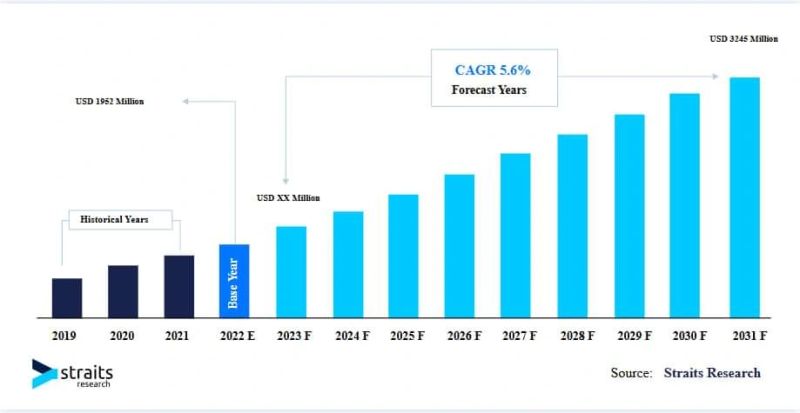In an era where visual content reigns supreme, the video editing industry has experienced exponential growth. As platforms like YouTube, TikTok, and Instagram dominate the digital landscape, the demand for video editing tools has surged. This article delves into the revenue generated by video editor apps, exploring key trends, market dynamics, and future projections.
Introduction
Video editing apps have evolved from simple, desktop-based tools to sophisticated, mobile-friendly applications that cater to both amateur and professional content creators. With the rise of social media and user-generated content, these apps have become essential for producing high-quality videos. This growth is reflected in their revenue streams, which have diversified significantly over the years. Understanding the revenue landscape of video editor apps offers insights into their market positioning and future potential.
Market Overview
The Surge in Popularity
The video editing app market has witnessed a remarkable surge in popularity, driven by several factors:
- Social Media Growth: Platforms like Instagram, TikTok, and Facebook have made video content a staple of social media marketing. Creators and businesses alike are investing in high-quality video production to engage audiences.
- Affordable High-Quality Cameras: With the advent of smartphones equipped with advanced cameras, video creation has become more accessible, leading to an increase in demand for editing tools.
- Content Creation as a Career: As content creation becomes a viable career option, more individuals are seeking professional-level editing tools to enhance their videos.
Market Size and Segmentation
The global video editing app market is experiencing robust growth. According to industry reports, the market was valued at approximately $XX billion in 2023, with a projected compound annual growth rate (CAGR) of X% from 2024 to 2030. The market can be segmented into various categories:
- Consumer vs. Professional: Consumer apps cater to casual users and influencers, while professional apps target filmmakers, video editors, and production studios.
- Platform: Apps are available on various platforms, including iOS, Android, and desktop (Windows and macOS).
- Revenue Model: Video editing apps typically generate revenue through subscriptions, one-time purchases, in-app purchases, and ad-supported models.
Revenue Models
Subscription-Based Revenue
The subscription model has become the dominant revenue stream for video editing apps. This model offers several advantages:
- Recurring Revenue: Subscriptions provide a steady income stream, allowing developers to invest in continuous updates and new features.
- Freemium Upsell: Many apps offer a free version with basic features and charge for premium features, driving users to opt for subscriptions.
- Scalability: Subscription models are scalable, accommodating a growing user base without significant changes to the app’s infrastructure.
Popular apps like Adobe Premiere Pro and Final Cut Pro X utilize this model, with monthly or annual subscriptions ranging from $20 to $50 per month. The flexibility and range of features offered in these subscriptions make them attractive to both individual creators and professional teams.
One-Time Purchases
While subscription models dominate, some apps still rely on one-time purchases. This model appeals to users who prefer a single upfront cost over ongoing payments. It is commonly used by desktop applications and niche video editing tools.
Apps like Filmora and CyberLink PowerDirector offer a one-time purchase option, typically priced between $60 and $100. This model can be appealing to users who require robust editing tools but are not interested in recurring payments. However, it may limit the developer’s ability to generate continuous revenue and provide regular updates.
In-App Purchases
In-app purchases (IAPs) are a popular way to generate additional revenue beyond initial downloads or subscriptions. These purchases can include:
- Premium Features: Advanced editing tools, special effects, and additional templates.
- Assets: Music tracks, stock footage, and transition effects.
- Customization Options: Themes, overlays, and filters.
Apps like Kinemaster and InShot leverage in-app purchases to enhance user experience and increase revenue. While this model allows users to customize their experience, it may also lead to user frustration if the core features are limited in the free version.
Ad-Supported Models
Ad-supported models provide a free version of the app that includes advertisements. This model can be effective for reaching a broad audience while generating revenue from advertisers. However, user experience may be compromised by the presence of ads.
Apps like VivaVideo and Quik offer free versions supported by ads, with options to remove ads through a one-time purchase or subscription. This model can be effective in attracting a large user base and monetizing through ad revenue.
Key Players in the Market
Adobe Premiere Pro
Adobe Premiere Pro is a leading video editing app with a significant market share. Known for its professional-grade features and integration with Adobe Creative Cloud, Premiere Pro follows a subscription-based model. Its extensive toolset and industry-standard status make it a preferred choice for professionals.
Final Cut Pro X
Apple’s Final Cut Pro X is another heavyweight in the video editing market. It is available through a one-time purchase and is known for its powerful performance and seamless integration with macOS. Final Cut Pro X caters primarily to professional video editors and filmmakers.
Kinemaster
Kinemaster is a popular mobile video editing app that offers a subscription model with additional in-app purchases. Its user-friendly interface and advanced features have made it a favorite among content creators on mobile devices.
InShot
InShot is another widely used mobile video editor that combines a freemium model with in-app purchases. It offers a range of editing tools and effects, catering to both casual users and social media influencers.
Trends Shaping the Industry
AI and Machine Learning
Artificial Intelligence (AI) and machine learning are revolutionizing video editing. Features such as automatic scene detection, smart enhancements, and real-time editing suggestions are becoming standard. AI-driven tools can significantly reduce editing time and improve overall video quality.
Cloud-Based Editing
Cloud-based video editing solutions are gaining traction, allowing users to edit videos from any device with internet access. This trend aligns with the growing preference for remote work and collaboration. Cloud-based platforms also facilitate seamless integration with other online tools and services.
Integration with Social Media
Video editing apps are increasingly integrating with social media platforms, allowing users to directly share their content. This integration simplifies the process of uploading videos and enhances user experience.
Future Projections
The video editing app market is expected to continue its growth trajectory, driven by technological advancements and increasing demand for video content. Key factors influencing future growth include:
- Expansion into Emerging Markets: As internet access and smartphone penetration increase in emerging markets, there will be greater demand for video editing tools.
- Advancements in Technology: Innovations in AI, cloud computing, and augmented reality (AR) will likely lead to the development of more sophisticated editing features.
- Increased Focus on Mobile Platforms: With the rise of mobile content creation, developers will continue to optimize apps for mobile devices, offering features tailored to on-the-go editing.
Conclusion
The revenue landscape of video editing apps reflects a dynamic and evolving industry. With diverse revenue models, a range of key players, and emerging trends, the market offers numerous opportunities for growth and innovation. As video content continues to dominate the digital space, video editing apps will remain essential tools for creators and businesses alike.
By understanding the current revenue trends and future projections, stakeholders can make informed decisions and capitalize on the opportunities within this thriving sector. As technology advances and user needs evolve, the video editing app market is poised for continued success and transformation.









